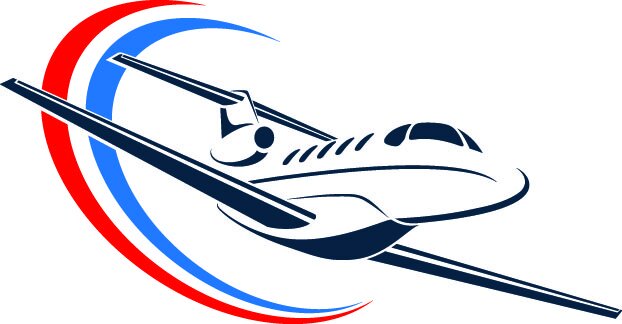
HIMS (Human Intervention Motivation Study)
What is HIMS (Human Intervention Motivation Study)?
The FAA’s HIMS program provides a pathway for pilots who have had alcohol or drug problems, as well as antidepressant medications (SSRIs) and complex medical problems, to regain medical certification and to get back to flying. Although originally intended for professional pilots, it has trickled down to private pilots as well - and now includes anti-depressant medication and complex medical problems.
Prior to 1974, pilots who had a diagnosis of alcoholism or illicit drug abuse were permanently denied medical certification. The pilot’s union (ALPA), FAA, and the National Institute for Alcohol Abuse and Alcoholism (NIAAA) collaborated on a project entitled Human Intervention Motivation Study. Thus HIMS, funded by NIAAA, was born. “Intervention” was a key element of the program once an individual had been “identified” and diagnosed with a substance use disorder. The “motivation” for treatment was the overwhelming desire of most pilots to get back into the cockpit.
HIMS-Alcohol/Drugs
The broad outline of the program works as follows: A pilot is “identified” as a result of a DUI (DWI), company intervention, self-referral, or less commonly a positive DOT, TSA pick up, etc. Once identified, the next step is diagnosis, in which case the pilot is sent either to a HIMS psychiatrist or treatment center. If the diagnosis is positive for a substance use disorder, this is followed by in-patient rehabilitation, and detoxification if needed. If inpatient rehabilitation is not indicated, the airman can participate in an intensive out-patient program (IOP) for 6 weeks of therapy. The rehabilitation program should be one with extensive pilot-related experience for the best results. In “stubborn” cases, an IOP program may be indicated after in-patient treatment.
Towards the end of the initial treatment program, a HIMS AME is selected for follow up with the airman after discharge. Immediately after discharge the airman must begin AA or NA meetings on an almost daily basis. This is called the “90/90”: ninety meetings within a 90 day period. In addition, the airman joins an “aftercare group,” which by the FAA’s definition, is a weekly meeting of like-minded pilots in recovery. Aftercare is a way of working out the lingering problems often faced by these airmen. If the pilot also has a concurrent psychiatric diagnosis (depression, anxiety, etc.) he/she will need to be in therapy to specifically deal with that issue as well.
In the broader sense, “aftercare” is much more than a weekly group meeting. It encompasses the entirety of all that is required of the airman to maintain their sobriety. After treatment, the AME will immediately institute a random urine screening program. The FAA requires a minimum of 14 randoms within a 12 month period. Of course, urine testing has its potential pitfalls, so it is advisable to use one or more additional means to assure sobriety: breath analyzers (eg. SoberLink), blood test (PEth), or hair/ nail testing. Even if a pilot has a history limited to an alcohol use disorder, more extensive drug testing is often indicated to assure that the pilot has not switched to using another substance.
Once the pilot has completed their “90/90”, is solidly participating in aftercare, and has multiple negative drug tests, it may be time to proceed with the “P&P.” This is the referral to a HIMS Psychiatrist and a HIMS neuropsychologist for evaluation on the depth of the pilot’s recovery, and their level of cognitive functioning. Chronic use of alcohol or other mind-altering drugs leads to a deterioration of cognitive processing. It is best to wait 3-6 months after the pilot’s sobriety date, to perform these evaluations. It is not uncommon to receive an opinion suggesting that the pilot is not ready to return to the cockpit, and should return in 3-6 months for repeat evaluations.
However, once we get a “clearance” from the P&P, the AME can perform the physical exam and forward the entire file to the Federal Air Surgeon (FAS) in Washington, D.C. In the meantime, if the pilot has an airline job to return to, now is the time to identify a peer pilot and chief pilot who will be keeping an “eye” on the subject. These individuals will be required to provide a monthly report to the AME on the pilot’s condition and performance. Everyone involved with a pilot’s HIMS program is obligated to immediately notify the AME/FAA of any positive drug or alcohol test, or any deterioration in the pilot’s condition.
Length of Monitoring
The duration of Authorizations in the HIMS program have increased substantially over the years. Apparently, the FAA had been under pressure from the NTSB for some time to “require that all airman clinically diagnosed with substance dependence…who are medically certified by the FAA subsequent to such diagnosis, are followed under the guidelines for SI…for the period that they hold such certificates.” Nevertheless, permanent abstinence from mind and mood altering substances is expected for the duration of the pilot’s flying career.
However, there is now a 4-phase approach to progressive SI’s. The “Initial Phase” is the same as described above and is implemented the first year. The “Early Phase” (years 2-4) drops the requirement for annual HIMS psychiatric evaluations and continuing aftercare. The “Advanced Phase” (years 5-7) reduces the frequency of random testing, and the “Maintenance Phase” (Year 7 and on) only requires that the airman get his/her medical done with any HIMS AME.
How successful is the HIMS alcohol program?
The FAA has been tabulating data using a new on-line tool: From April 2011, through October 2019 (1st class only), there were 1162 individual pilots involved with 1367 “incidents” necessitating HIMS program entry. However, in the past 2 years that has increased to 200-250 new cases per year. The program success rate appears to be about 85% with sustained abstinence. The single relapse rate was 12.7 %, with 3% for 2 or more relapses.
Of the approximate 2500 AME’s only 204 HIMS AMEs have been certified as of the end of 2019.
According to the FAA, only 48 AMEs do the vast majority of HIMS work (6 or more cases).
HIMS-Antidepressants
The second most common issue leading to a HIMS evaluation is a pilot who takes, or who has taken, an antidepressant medication.
In 2010, the FAA published a pathway to consider Special Issuance Authorization medical certificates for a pilot who takes an antidepressant.
Celexa (Citalopram)
Lexapro (Escitalopram)
Prozac (Fluoxetine)
Zoloft (Sertraline)
Wellbutrin (Buproprion extended release (XL) or sustained release (SR))
Pristiq (Desvenlafaxine)
Duloxetine (Cymbalta)
Effexor (Venlafaxine)
The FAA requires additional testing, medical monitoring, and documentation for your FAA medical certification and recertification.
The FAA utilizes the Human Intervention and Motivation Study (HIMS) program for oversight of the process and requires airmen to be seen by a HIMS AME for their certification.
The applicant must have one of the following diagnoses:
Major depressive disorder (mild to moderate) either single episode or recurrent episode
Dysthymic disorder
Adjustment disorder with depressed mood
Any non-depression related condition for which the SSRI is used (anxiety, PTSD, etc.)
For a minimum of 6 continuous months prior, the applicant must have been clinically stable, as well as on a stable dose of medication (no changes), without any aeromedically significant side effects and/or increase in symptoms.
If the applicant has been on the medication for less than 6 months, the HIMS Examiner must advise that 6 months of continuous use is required before consideration for a Special Issuance.
The applicant DOES NOT have symptoms or any history of:
Psychosis
Suicidal ideation
Electroconvulsive therapy (ECT), Transcranial Magnetic Stimulation (TMS)
Treatment with multiple SSRIs concurrently
Multi-agent drug protocol use (prior use of other psychiatric drugs in conjunction with SSRIs)
If you are on a SSRI that is not listed above, the HIMS Examiner must advise that the medication is NOT acceptable for consideration for a Special Issuance.
If you stop an antidepressant and need to restart it, the minimum waiting period is 6 months on a stable dose and with minimal or no symptoms.
If you are currently taking an SSRI but your prognosis predicts that you would do okay without it, you are able to apply for a medical certificate after 60 days without the SSRI.
How do I set up the first appointment with my HIMS AME?
Click here or contact our offices at (785)-706-4327 and request an airman HIMS AME appointment.
Prior to your first appointment, you should arrange for the following documentation to be sent to our office:
Copy of the letter from the FAA indicating you need to consult a HIMS AME – this can come from you.
Copy of your FAA Airman Medical Record (to request, call 405.954.4821 or click here – this needs to be sent to our office directly by the FAA).
How Do I Change My HIMS AME?
The Authorization for Special Issuance requires that airmen DO NOT change your designated HIMS AME without prior FAA approval.
In rare cases in which the HIMS AME listed on the Authorization Letter is no longer available to the airman (ex: HIMS AME retires, is no longer a HIMS AME, is deceased, or the airman or HIMS AME relocates to a new state, etc.), a change request is required.
The FAA will review the submitted information, and IF the change is approved, will send an updated Authorization Letter with the new HIMS AME information to the airman.
What to expect at the first visit?
The first visit is a one hour in-person session (later sessions will likely be 30 minutes).
During this time, the HIMS AME will provide an overview of the HIMS Program and the Special Issuance process.
The FAA Airman’s Medical Record will be reviewed in detail together, and the airman will sign a comprehesive medical records release for other records and information that may be required for the HIMS process.
The HIMS AME will interview the airman at length regarding their medical, psychological, social, and family history, especially as it relates to the reason for entry into the HIMS Program. This will include a brief writing assignment.
The session will end with development of a plan of action and scheduling of the next HIMS AME appointment (likely virtually). Frequency of appointments will vary depending on the situation: typically every three months, alternating with face-to-face meetings and virtual meetings.
What does it cost?
The HIMS Program is both lengthy and costly and not covered by health insurance.
Components of the program that will likely include fees are:
Alcohol/substance abuse treatment
Aftercare (in addition to Alcoholics Anonymous/NA participation)
Abstinence confirmation (random drug testing)
HIMS Neuropsychological testing
Flint Hills Neuropsychology (Christine Durrett, PhD)
Annual HIMS Psychiatric evaluation
Mental Health Collective (John Whipple, MD)
HIMS AME visits*
*Only the HIMS AME portion occurs at Kansas Aviation Medicine. For the HIMS AME visits, payment must be made when scheduling the appointment.
There may be some financial assistance available for pilots in the HIMS program through a benevolence fund.




